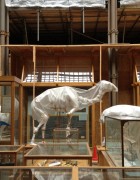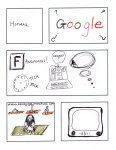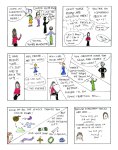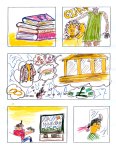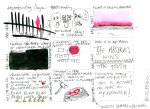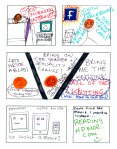Going through the results from Liverpool and doing a first pass at analysis of the comics produced by members of the public during the workshop. There are well established techniques for analysing visual research material although they usually address more conventional media such as ethnographic photography or visual field notes and video recordings of participants. Most recently, attention has been paid to visual analytics, referring to analytical techniques for large multi dimensional data sets such as financial transactions or genome sequences. Major challenges include the data set being many times larger than the pixel dimensions of the display along with inconsistent and ambiguous data.
Comics have been a subject of qualitative research and textual analysis since early work by Gilbert Seldes (1923) and David Kunzle (1974). Scholarly attention to comics as an art form gathered pace with the publication of Scott McCloud’s Understanding Comics (1993) and has since seen wide acceptance in universities and academia. Some analytical work in this area considers text/image relations from a semiotic and multimodal perspective. Gunther Kress has contributed to a view of comics as communicating through multiple modes i.e. sequence, image, text, use of colour. Many theorists of comics take issue with McCloud’s definition of comics as “juxtaposed pictorial and other images in deliberate sequence, intended to convey information and/or to produce an aesthetic response in the viewer.” They argue that this definition misses the idea of comics as a unique cultural context (made up of the readers, vendors, publishers, authors etc) and could just as easily apply to many children’s books.
Returning to the examples from Liverpool above, it seems clear that they could be analysed from a strictly semiotic point of view. What signs and signifiers are present? How are they structured on the page? What is the relationship between image and text? However, I suspect for my case study this would miss the main question; How do people represent their browser history in visual narrative form? While semiotic (multimodal) analysis will form the basis of my approach the materials will be seen through the lens of my research question in order to inform a practical design process rather than finite texts in themselves. They are contributive to a larger process of design production and should be considered in that context.
